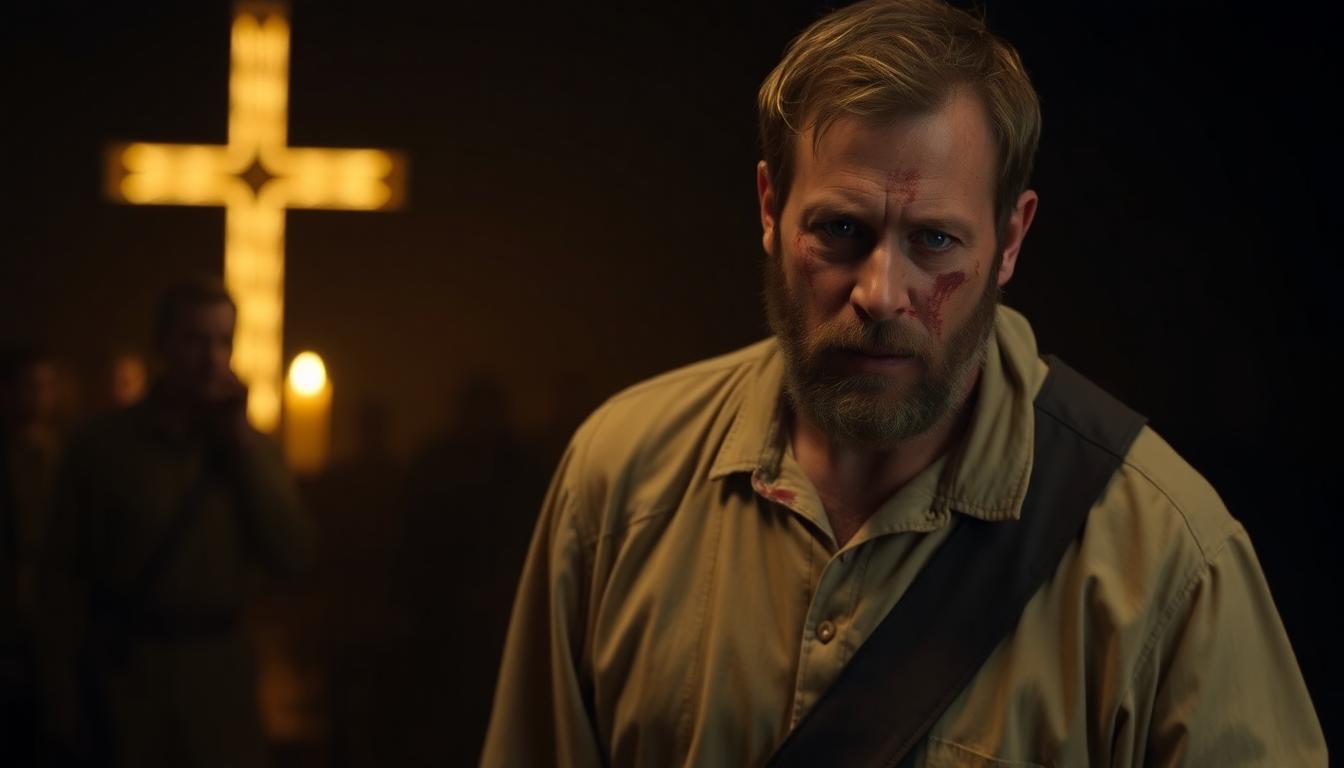Marvel’s The Punisher is a series defined by violence, moral ambiguity, and the pursuit of justice at all costs. In its second season, the show introduced a chilling new adversary for Frank Castle: John Pilgrim. While the character delivers plenty of action and tension, what truly stands out is how the show’s ending for Pilgrim offers a more hopeful and human conclusion than anything found in the comics. Here’s why the series made this choice, what it says about Pilgrim, and how his story bridges themes of justice, faith, and redemption.
Who Is John Pilgrim?
John Pilgrim arrives as a menacing, deeply religious assassin, marked by tragedy and fueled by conviction. Hired to kill Amy Bendix and eliminate Frank Castle, Pilgrim’s methods are ruthless, and his skills terrifying—yet he’s no one-dimensional villain.
Inspired partly by the Mennonite character from the comics, Pilgrim’s backstory ties him to a violent, racist past (as a former Aryan Brotherhood enforcer) but positions him as a man desperately seeking a new life through faith and family. This duality is core to his arc in the show.
The Showdown: Castle vs. Pilgrim
The showdown between Castle and Pilgrim is one of the series’ most intense confrontations. Castle, as usual, approaches the fight with brute, relentless momentum—crashing through walls and using sheer force. Pilgrim, on the other hand, is a patient hunter, using strategy, silence, and cold efficiency.
Their battle, full of hand-to-hand violence, collapsing scenery, and emotionally-charged moments, does more than provide spectacle—it strips both men down to their basic philosophies. Castle fights for a kind of personal justice, while Pilgrim’s motives are clouded by family, faith, and blackmail.
Philosophical and Emotional Depth
The finale’s most important twist isn’t who wins the fight itself, but how both characters choose to end it. Frank Castle, known as a vengeful antihero, spares Pilgrim’s life after learning about his tragic past: his wife’s death and the manipulation of his sons by a corrupt family. This act marks a rare moment of mercy, suggesting growth in Castle and recognizing that Pilgrim, though violent, is a victim as much as a villain.

Pilgrim’s Ending: Redemption Over Retribution
Unlike so many antagonists in Marvel comics—who usually meet grisly ends—Pilgrim’s story closes with a glimmer of hope. Freed from his oppressors and reunited with his sons, he walks away from a life of violence. The show’s creators chose to highlight the power of redemption, suggesting that even the most damaged characters are capable of change.
This softer ending stands in stark contrast to the comics. In Marvel’s stories, the Mennonite (Pilgrim’s inspiration) ultimately falls in brutal combat with The Punisher, a fate more in line with classic antihero narratives. The show’s decision to spare Pilgrim illustrates a broader message: faith and forgiveness matter just as much as vengeance.

Themes: Faith, Morality, and the Cycle of Violence
John Pilgrim’s arc is thick with symbolism. His violent past and religious tattoos paint him as a man divided against himself. Throughout the season, he self-punishes as atonement, alluding to deep moral conflict and a desire for spiritual reconciliation.
The series leans into Christian imagery, with references to forgiveness, sacrifice, and the struggle to break cycles of vengeance. Pilgrim’s journey poses tough questions: Does faith excuse or amplify violence? Can damaged people ever truly change? By setting Pilgrim’s ending against Castle’s own redemptive choices, the show elevates both men beyond stereotypes.
Character Study: Comparing the Show to the Comics
The Pilgrim character was developed for Netflix, inspired by the Mennonite, who in the comics is a pacifist-turned-avenger but ultimately meets a violent end. Pilgrim is more layered, his motives more complex. The show’s writers give him space to explore family, regret, and atonement, resulting in a villain who feels both deadly and deeply human.
Pilgrim’s nuanced portrayal has resonated with audiences—many see him as one of the best-developed adversaries in the Marvel Netflix universe, offering fans something richer than a typical villain.
Critique: Pacing and Plot
While Pilgrim’s story is compelling, some critics argue the series tried to juggle too many plotlines in its final run—rushing to develop the Schultz family and wrap up minor arcs. Others feel Pilgrim’s transformation comes a bit late, but most agree it’s the emotional payoff and philosophical questions that linger after the final credits.
Why the Change Matters
Giving Pilgrim a happier ending changes more than a single character’s fate. It opens the door for future stories, emphasizes the importance of second chances, and suggests that brutal cycles of violence don’t always have to end in death. Instead, the show centers on responsibility, reconciliation, and the hard road toward peace.
For Frank Castle, sparing Pilgrim’s life is a turning point. It hints at personal growth—a subtle suggestion that even the Punisher may crave redemption for himself.
Conclusion
By adapting John Pilgrim’s arc for TV, The Punisher’s creators delivered a rare twist: an antagonist who survives, changes, and moves toward a future beyond bloodshed. It’s a choice that invites audiences to look beyond the violence and find hope in faith and forgiveness, even in the darkest of stories.
To contact us Click Here .
Discover more from Marvel Updates
Subscribe to get the latest posts sent to your email.

